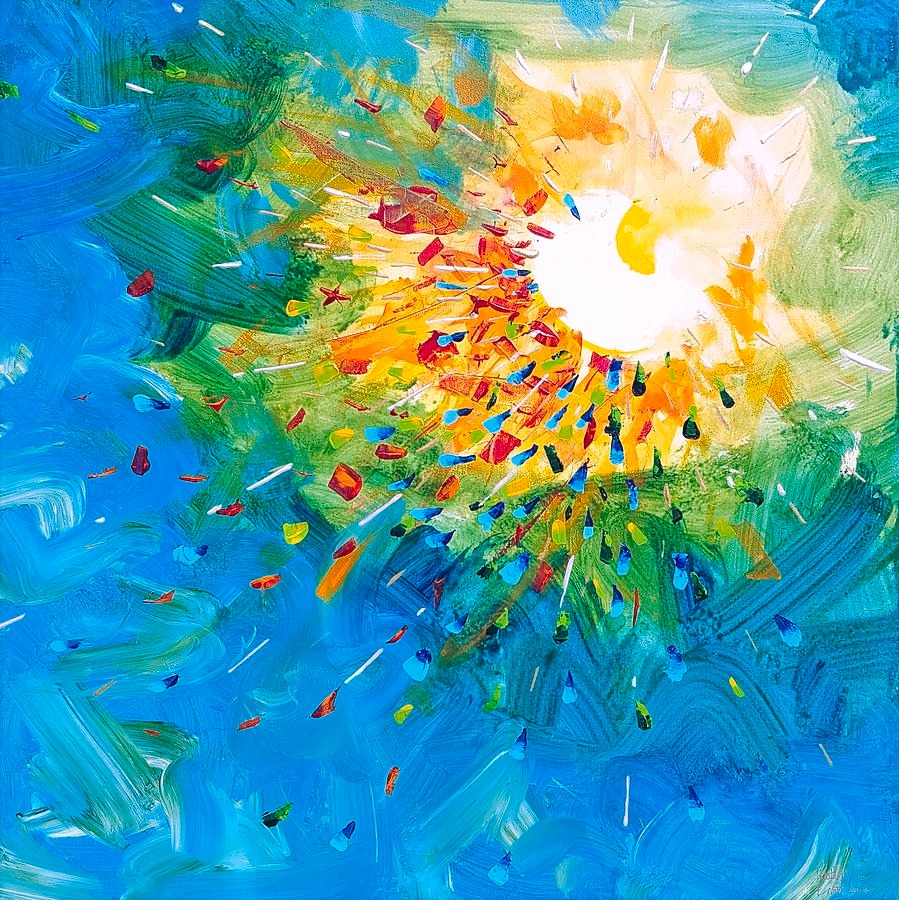Moments of fracture contain within them the possibility of life reconstructed and renewed. View study guide here. Watch recording here.

Next week we will have some of our grandchildren over for the last night of Chanukkah. My wife Ana said to me, “You can explain the holiday to them.” “Sure. It’s all about a great miracle God performed for our ancestors in that time. Well, it’s really the celebration of a heroic military victory over an invading, oppressive regime. Actually, it has more to do with renewing the observance of Sukkot, which had been interrupted during the war with the Seleucid empire. Maybe the best thing for me to do is to read them Eric Kimmel’s The Chanukkah Guest, about Bubba Brayna, a bear and potato latkes.” Instead of trying to navigate, at least for my grandchildren, among the various and contending perspectives of theology, history and religious ritual, it might be best to just tell a story.
One thing that is clear about Chanukkah is that the early rabbis excluded any story about it from the Jewish Bible. Both First and Second Maccabees can be found in the Apocrypha, a collection of Jewish writings produced during the Second Temple Period but not included in the Tanach. The Apocrypha became part of Christian canon, though Martin Luther removed those books from the Protestant Bible. Apocryphal books, including First and Second Maccabees, remain part of the Catholic Bible. In short, the story of Chanukkah was removed from Judaism’s canon of sacred memory. It was relegated to the status of “apocrypha” (“secret, not approved for public reading”).
This excision of part of our history evidences a trauma of sorts. There are a variety of reasons why the early rabbis had less than positive views about the Hasmoneans, the priestly dynasty which led the fight against the Seleucids and then ruled Judea during the 1st and 2nd centuries B.C.E. The absence of an official narrative about that war engendered displays of creativity. Some were designed to hide aspects of what happened, some to glorify certain themes, and some to elevate elements not mentioned in any of the more contemporaneous records. Mention of oil lasting eight days instead of only one is not found until its appearance in the Talmud, written some 600 years after the events described.
A shattered life and a response to it lie at the heart of this week’s Torah portion. Joseph is now Viceroy of Egypt. He lives within its palace and commands all the resources of the mightiest empire in the ancient world. He assumes an Egyptian name, marries the daughter of an Egyptian priest. His children bear names that celebrate his current Egyptian successes yet reveal how his Hebrew past and its injuries haunt him. Into this conflicted and traumatized life journey his brothers. They have come from Canaan in search of life-saving sustenance. Joseph can easily provide them what they need to survive. The deeper question is: Can he find in his encounter with them what he needs in order to find wholeness?
Heather Ernst is an artist who now lives in Tacoma, Washington. She received a Masters of Architecture Degree from the University of Colorado. She practiced architecture for 25 years, specializing in high end residential, medical and retail projects. At some point she gave that all up and remade herself as an artist, because she thought she could. Instead of addressing the needs of form and function, she turned in her art to the world of emotion. Of her work she writes, “Want to feel the texture? To see what clash of colors made you feel exuberant, energized, or focused? If any brushstroke or scrape of the palette knife awakens the emotional part of your mind, the place where you visualize no tangible object you’ve ever known, that is enough.”
Her work shown here is titled, Shattered. Ernst describes this not as a scene of tragedy but one of engendering power. This is a vista of desire, powering us “to dance, to produce, to love.” The “sparks that appear to scatter and shatter” do not describe an undoing ending only in destruction, finality, death. These are the shocks, the solar explosions, necessary for the renewal of life. “That’s where it all comes from,” she writes. “We create that which carries the earth through time.”
The poetic reimagining of the Torah known as Kabbalah paints Creation in a similar palette, a shattering of vessels (Shevirat haKeilim). This shattering does not signify a flaw in the creative process. It serves a very specific purpose: to bring about a state of separation of the divine light into distinct qualities and attributes, to introduce diversity, multiplicity into creation. It is a holy gift best honored by the exercise of human initiative, choice, and responsibility. This fracturing is the birth of hope for new life.
On the last night of Chanukkah, as we light eight candles, perhaps we will tell many different stories. And maybe each child will embrace the one that best describes the purpose they see for themselves in a fractured world, a world in which they can each be a unique source of hope.
Join us here at 7:00 p.m. (PT) Thursday December 22 as we explore shattering and hope.








